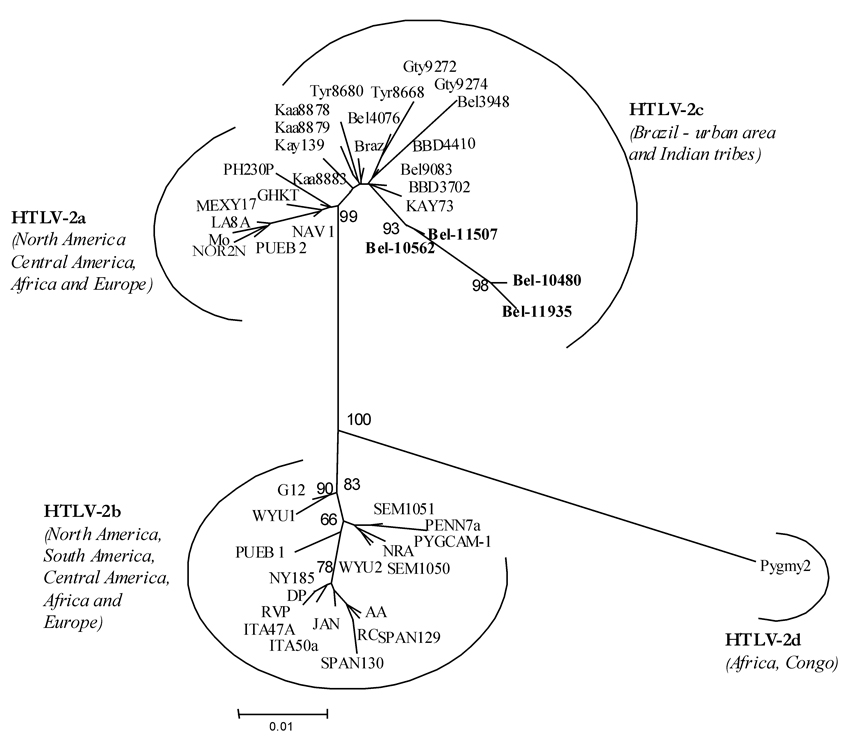The present work evaluated the epidemiology of human immunodeficiency virus 1/human T-cell lymphotropic virus (HIV-1/HTLV) coinfection in patients living in Belém (state of Pará) and Macapá (state of Amapá), two cities located in the Amazon region of Brazil. A total of 169 blood samples were collected. The sera were tested by enzyme-linked immunosorbent assay to determine the presence of antibodies anti-HTLV-1/2. Confirmation of infection and discrimination of HTLV types and subtypes was performed using a nested polymerase chain reaction targeting the pX and 5' LTR regions, followed by restriction fragment length polymorphism and sequencing analysis. The presence of anti-HTLV1/2 was detected in six patients from Belém. The amplification of the pX region followed by RFLP analysis, demonstrated the presence of HTLV-1 and HTLV-2 infections among two and four patients, respectively. Sequencing HTLV-1 5' LTR indicated that the virus is a member of the Cosmopolitan Group, Transcontinental subgroup. HTLV-2 strains isolated revealed a molecular profile of subtype HTLV-2c. These results are a reflex of the epidemiological features of HIV-1/HTLV-1/2 coinfection in the North region of Brazil, which is distinct from other Brazilian regions, as reported by previous studies.
human T-cell lymphotropic virus; human immunodeficiency virus 1; retrovirus; coinfection; molecular epidemiology



